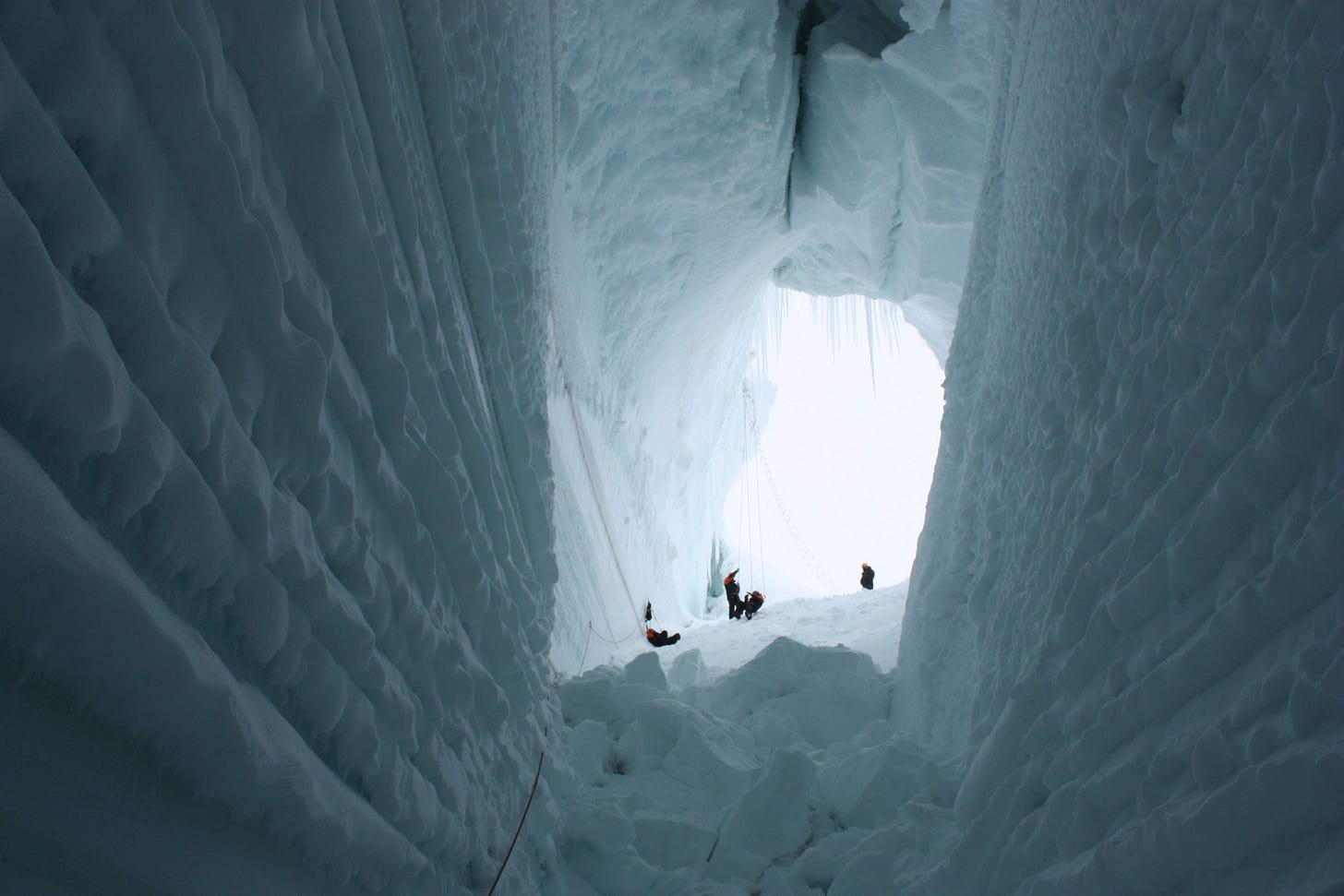More on glaciers
The time I got closer to a crevasse than I ever expected (1 minute preview, 6 minute read for paid subscribers)
Sometimes, asking a good question can take you somewhere you never expected.
It was 2008, and I was at a meeting to discuss how New Zealand’s Antarctic programme could improve its quarantine (or biosecurity), so that cargo transported to Antarctica wasn’t carrying pests or diseases. Many people had suggestions, but I asked why? What were they trying to protect? My question sparked a conversation, which eventually led to me working on a risk assessment looking at the introduction and spread of non-native species in Antarctica. I should write an article about it sometime, because it’s an interesting story, but that’s for another day1.
The reason I’ve mentioned this work is that it also led to me travelling to Antarctica in 2009. I wanted to share with you one story from my time there.
Much of what I did was observe how Scott Base and neighbouring McMurdo Station operated. My colleague from Antarctica New Zealand and I looked at everything. We visited the kitchens and food storage areas. We dug around in the equipment store. We inspected the mobile huts, which could be towed to field bases. We asked to visit the sewage treatment plants at Scott Base and McMurdo Station. I made the day of the man who ran the McMurdo plant – in all years he’d run it, I was the first to request a tour.
Towards the end of my visit, I was invited to join some newly-arrived Scott Base staff for crevasse training. I was curious, but I had almost no experience with snow and ice, and all I knew about crevasses was that they were dangerous and I should stay away from them. I said yes, of course.






